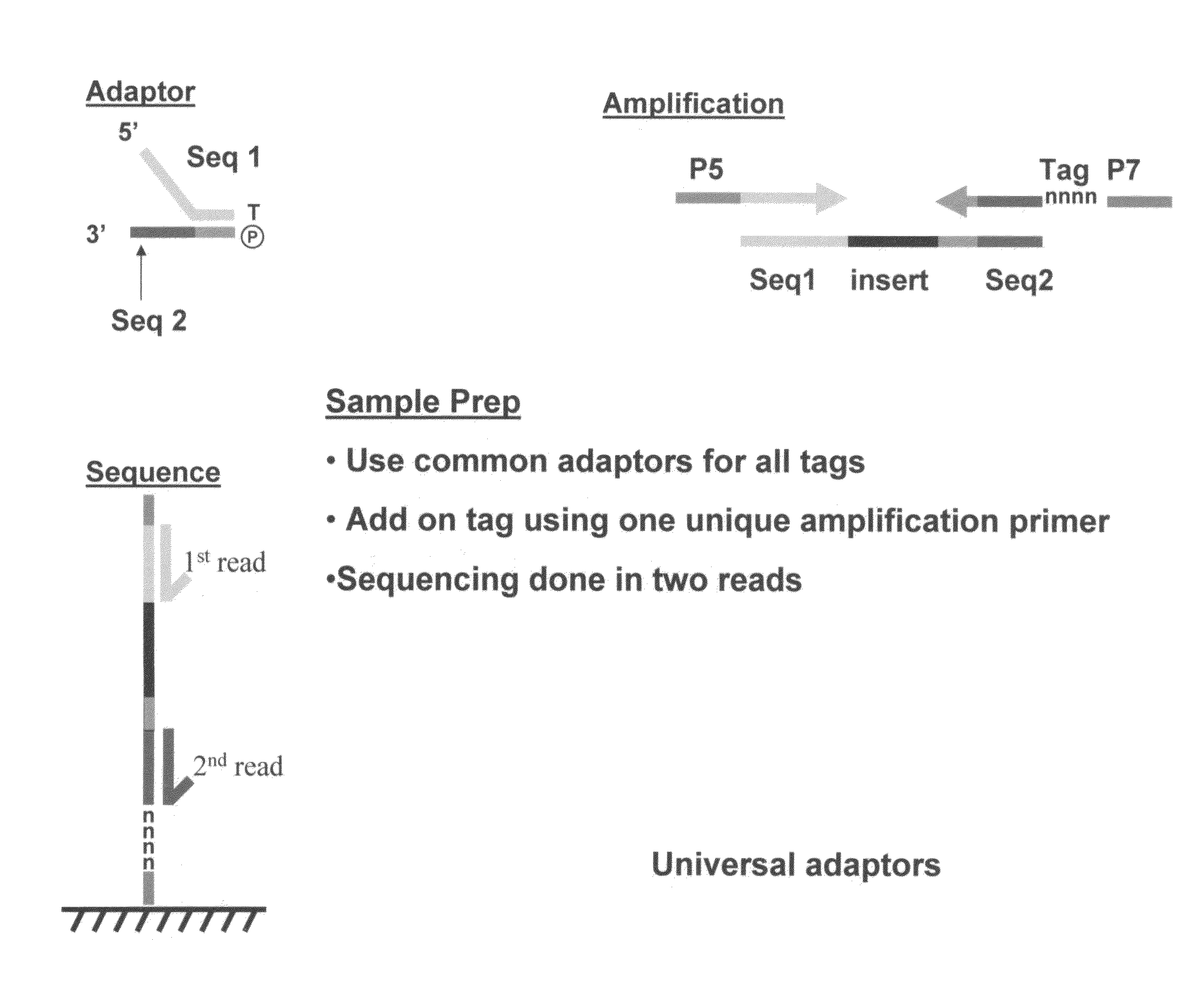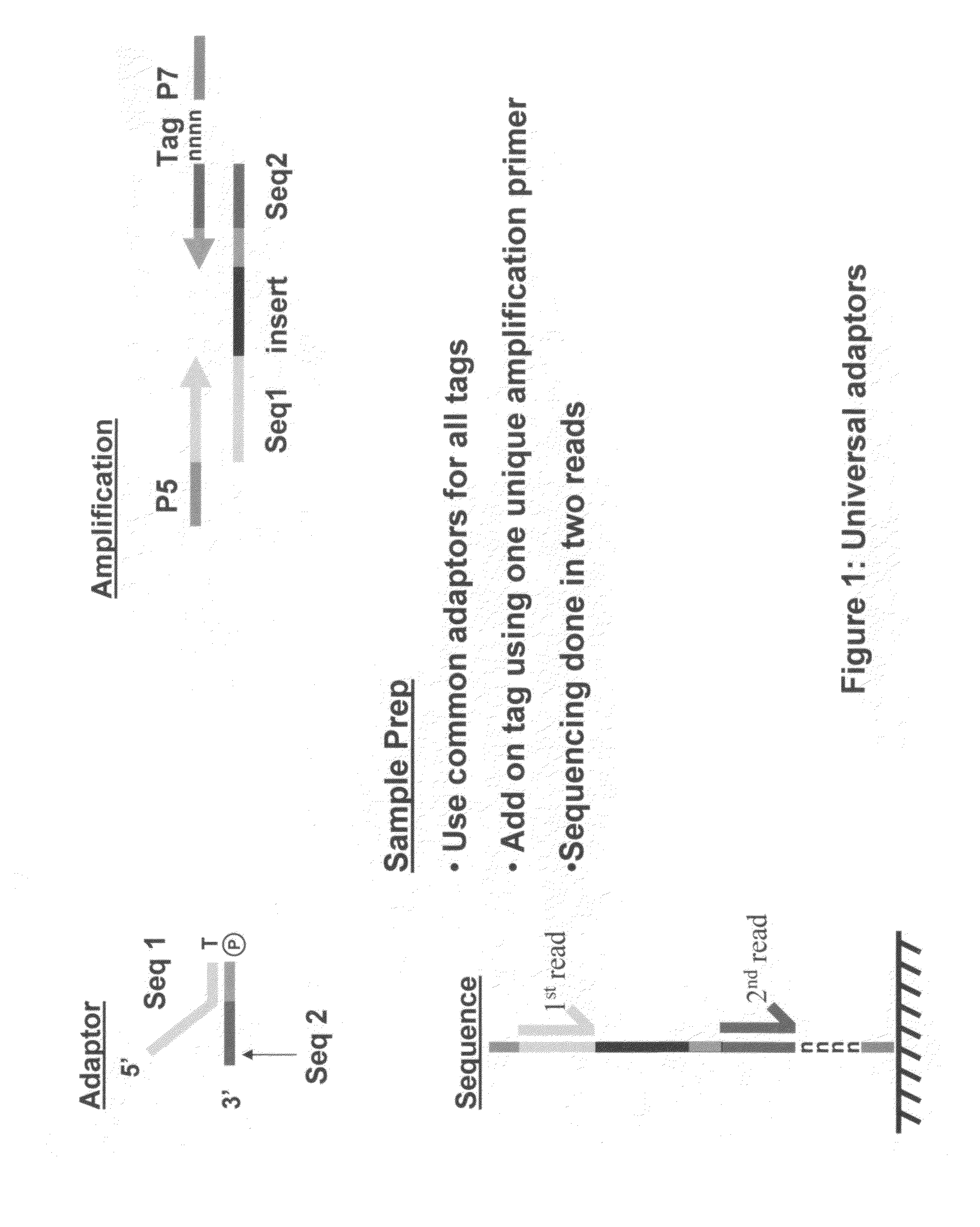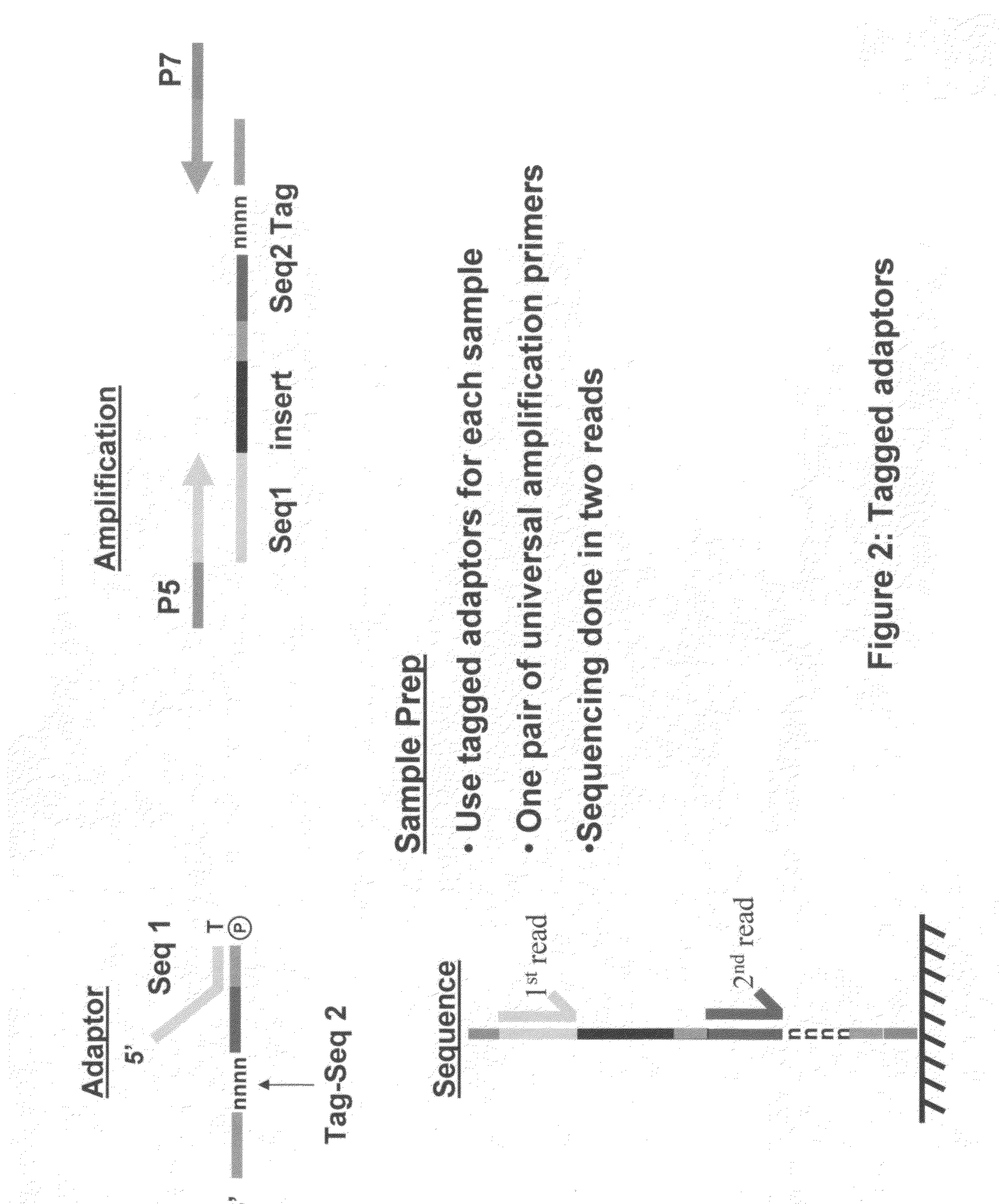Methods for indexing samples and sequencing multiple polynucleotide templates
a polynucleotide template and sample technology, applied in the field of methods for indexing samples and sequencing multiple polynucleotide templates, can solve the problems of loss of information pertaining to individual dna samples, time taken to perform the study, and high cost of large-scale genotyping
- Summary
- Abstract
- Description
- Claims
- Application Information
AI Technical Summary
Benefits of technology
Problems solved by technology
Method used
Image
Examples
example 1
Preparation and Conventional Sequencing of Tagged Libraries
[0129]The following experimental details describe the complete exposition of one embodiment of the invention as described above.
[0130]Two libraries were made, one using purified human BAC DNA (140 k human chromosome 6 insert cloned into a pTARBAC vector) and the other purified PhiX174 RF1 DNA (NEB, N3021L). Each library was prepared separately. The DNA was first prepared for ligation to forked adaptors by: fragmentation of the DNA by nebulisation, end repair of the DNA ends to render them blunt-ended and phosphorylated, then the addition of a single ‘A’ nucleotide onto the 3′ ends of the DNA fragments. The ligation reaction was performed with the prepared fragmented DNA and adaptors pre-formed by annealing ‘Oligo A’ and ‘Oligo B’ (sequences given below). The same adaptors were used for each library. The product of the reaction was isolated / purified from unligated adaptor by gel electrophoresis. Finally, the product of the li...
example 2
Acrylamide Coating of Glass Chips
[0231]The solid supports used are typically 8-channel glass chips such as those provided by Silex Microsystems (Sweden). However, the experimental conditions and procedures are readily applicable to other solid supports.
[0232]Chips were washed as follows: neat Decon for 30 minutes, milliQ H2O for 30 minutes, NaOH 1N for 15 minutes, milliQ H2O for 30 minutes, HCl 0.1N for 15 minutes, milliQ H2O for 30 minutes.
[0233]Polymer Solution Preparation:
For 10 ml of 2% polymerisation mix.
[0234]10 ml of 2% solution of acrylamide in milliQ H2O[0235]165 μl of a 100 mg / ml N-(5-bromoacetamidylpentyl) acrylamide (BRAPA) solution in DMF (23.5 mg in 235 μl DMF)[0236]11.5 μl of TEMED[0237]100 μl of a 50 mg / ml solution of potassium persulfate in milliQ H2O (20 mg in 400 μl H2O)
[0238]The 10 ml solution of acrylamide was first degassed with argon for 15 minutes. The solutions of BRAPA, TEMED and potassium persulfate were successively added to the acrylamide solution. The m...
example 3
Synthesis of N-(5-bromoacetamidylpentyl)acrylamide (BRAPA) (1)
[0239]
N-Boc-1,5-diaminopentane toluene sulfonic acid was obtained from Novabiochem. The bromoacetyl chloride and acryloyl chloride were obtained from Fluka. All other reagents were Aldrich products.
[0240]
[0241]To a stirred suspension of N-Boc-1,5-diaminopentane toluene sulfonic acid (5.2 g, 13.88 mmol) and triethylamine (4.83 ml, 2.5 eq) in THF (120 ml) at 0° C. was added acryloyl chloride (1.13 ml, 1 eq) through a pressure equalized dropping funnel over a one hour period. The reaction mixture was then stirred at room temperature and the progress of the reaction checked by TLC (petroleum ether:ethyl acetate 1:1). After two hours, the salts formed during the reaction were filtered off and the filtrate evaporated to dryness. The residue was purified by flash chromatography (neat petroleum ether followed by a gradient of ethyl acetate up to 60%) to yield 2.56 g (9.98 mmol, 71%) of product 2 as a beige solid. 1H NMR (400 MHz,...
PUM
| Property | Measurement | Unit |
|---|---|---|
| temperature | aaaaa | aaaaa |
| pressure | aaaaa | aaaaa |
| volumes | aaaaa | aaaaa |
Abstract
Description
Claims
Application Information
 Login to View More
Login to View More - R&D
- Intellectual Property
- Life Sciences
- Materials
- Tech Scout
- Unparalleled Data Quality
- Higher Quality Content
- 60% Fewer Hallucinations
Browse by: Latest US Patents, China's latest patents, Technical Efficacy Thesaurus, Application Domain, Technology Topic, Popular Technical Reports.
© 2025 PatSnap. All rights reserved.Legal|Privacy policy|Modern Slavery Act Transparency Statement|Sitemap|About US| Contact US: help@patsnap.com



